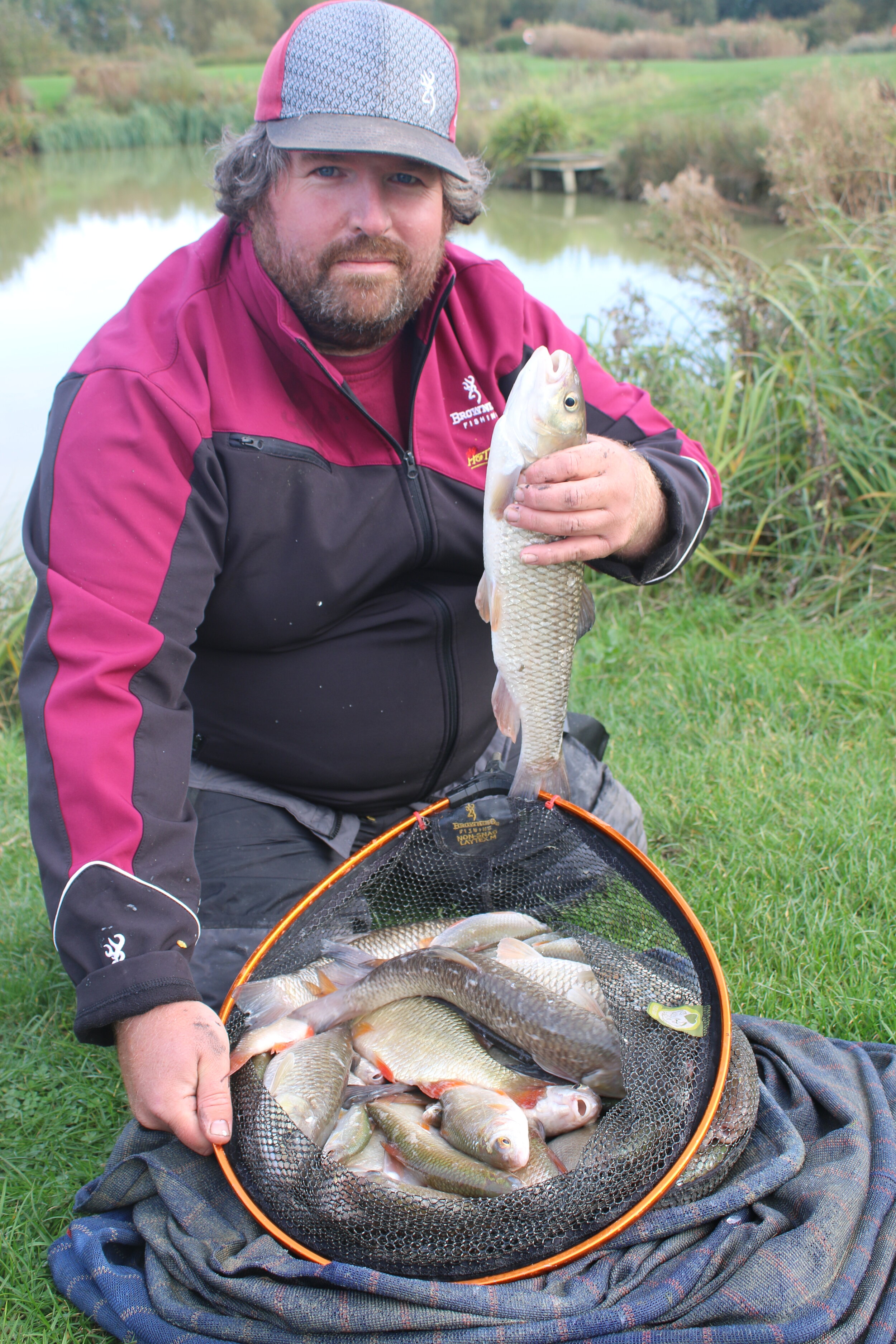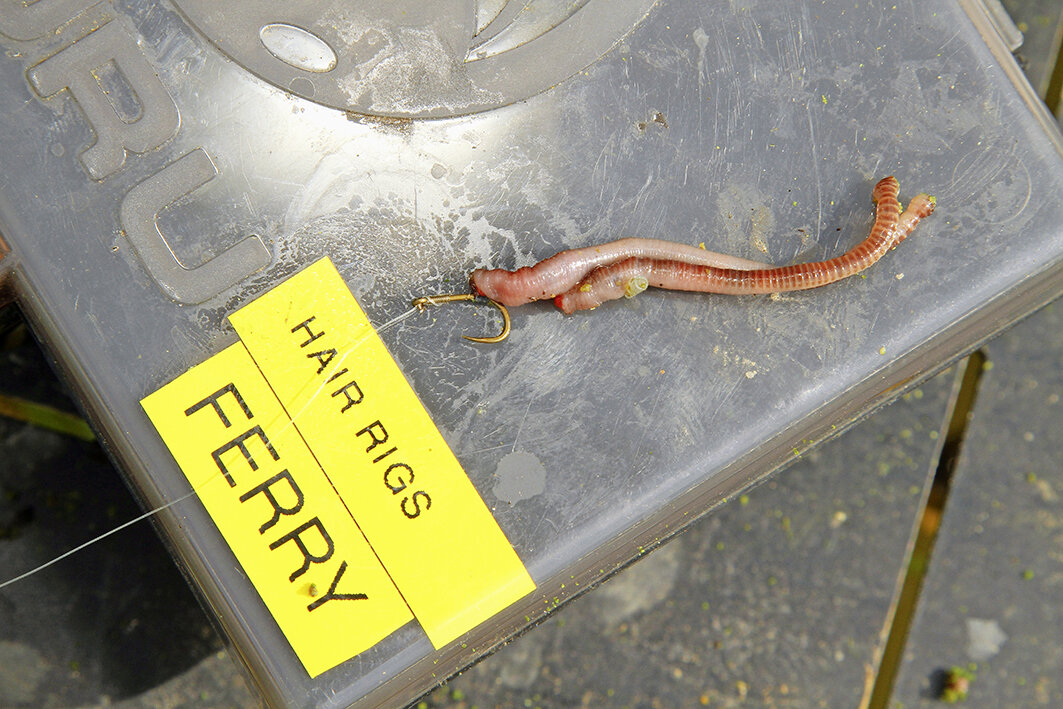15 tips to keep the carp feeding with Steve Ringer
I love this time of year on the stillwaters, as the fish really get their heads down for a feed.
Carp in commercials aren’t stupid, and they can become cagey as the summer wears on, but now they know they’ve got to get some grub inside them before winter arrives – and that means big weights if you get your tactics right.
I believe that a lot of anglers fish too negatively too soon, cutting back on bait and feeding, and they can suffer the consequences at the weigh-in.
As you’ll know, I’m a big fan of fishing positively and right now that mentality can really pay off.
Heavy feeding – at the right time – the use of big baits and managing your swim properly come into their own on many of the waters I fish and have helped me to some of my biggest-ever catches at this time of year.
Some of them have come from fishing not much further out than the end of my keepnet!
Here are a few of the tricks I use for success in autumn…
1) Find the hotspots
Plumbing up is crucial right now, as you need to find the natural hotspots in your swim where fish hold up in numbers – it’s not just visible features above the water that hold fish.
Many anglers have a preconceived idea of how to fish a peg and only plumb areas they intend to fish, rather than the whole swim. They then miss out on a potential fish-holding area, as they have no idea it’s there!
I always spend a good five minutes plumbing around so I have an accurate picture of what’s in front of me.
It might sound like something small that everyone does, but do it properly and it can make a massive difference.
2) Go a foot past the slope
Instead of fishing right at the bottom of the near shelf, go out 1ft further on the flat bottom below the slope.
Fish right at the bottom of the slope and you’ll get fish there and on the flat, which can mean line bites. Where the bottom has properly flattened out is often referred to as the ‘5m line’, but it can be further out.
3) Fish to the side
Fish the 5m line at an angle – either at 10 o’clock or two o’clock, imagining the swim as a clock face.
Which way I fish depends on wind and tow. I always like to try and fish so my float is moving away from me, rather than back underneath the pole tip, as this helps with good rig and bait presentation.
If there’s no tow then I will look to fish to the side where I think the fish are likely to come from. For instance, if I draw peg 9 and the fish are in pegs 6 and 7 then I will fish towards the lower numbers.
The big advantage to fishing at an angle as opposed to straight in front of you is that when you hook a fish you don’t end up playing it right on top of where you are feeding.
4) Give them some meat
Meat is an awesome bait at this time of year, possibly because the fish are bored of seeing pellets by now. I always have two or three tins of cubed meat on my bait tray.
A 6mm cube catches all sizes of carp but is big enough to avoid the attentions of silvers. To get a real edge with meat I feed it with crunchy casters, which hold carp in the swim for longer periods. On commercials I feed a 250ml pot of two-thirds caster and one-third meat to kick off.
I then loosefeed meat over the top. If bites fall away I get the big pot out again and feed some more hemp
5) Keep it wet
Keeping meat damp on the bank stops it drying out and potentially floating, as well as helping to soften it –and carp love a soft bait!
To keep it damp all I like to do is cover it with water and then drain the water off after five minutes.
This ensures the meat will be wet but not soaking, and I then cover my bait box of meat with a wet towel to stop the air getting to it.
6) Go longer in the margins
When you are looking to catch carp in the edge you need to think about fishing long as opposed to short.
The reason for this is, carp tend to be more confident the further down the bank you fish, which is down to the lack of noise and disturbance.
For this reason I will quite often fish a full 16m down the edge if my swim allows it.
If you have a good edge swim, as in one with cover or depth, it can be well worth looking there early on just to see if there are any resident fish you can pick off. I prefer to have my first look without feeding. Then, if no bites are forthcoming, I’ll feed a small amount of bait to try and pull a fish or two into the area.
7) Feed particles in the edge
The margins are still a great area to target at the moment – you just need to change your approach slightly.
Rather than dumping loads of groundbait in the edge I find it better to feed dead maggots and wetted-down 2mm pellets.
These make a great combo – the pellets attract the carp and then, once they arrive, they feed on the dead maggots.
8) Try liquid corn
Just because it’s that bit colder doesn’t mean that on snake lakes you can’t catch in the shallow water.
The key is to put a cloud in the water, and nothing beats liquidised corn. Fed through a Kinder pot, it explodes on the surface and forms a cloud in the water. Carp will then move into the cloud to feed.
When fishing in this manner I like to put four or five grains of corn in a small pot then cap it off with the liquidised corn.
The fish are then attracted by the cloud, but once there they will feed on the solid offerings on the bottom.
Hookbait for this tactic can either be a single grain of corn or, better still, a corn skin, which is light and will flutter enticingly in the cloud.
9) Use back shots
Good presentation is vital when pole fishing, so it never ceases to amaze me how many anglers still don’t fish with back shots.
Back shots are something I now always fish with – normally this involves a string of three or four No9 shot between pole float and pole-tip.
The first shot is positioned 2ins-3ins above the float and the rest are then spaced at 3ins intervals above this.
These back shot not only help in terms of presentation but they also make me stay tight on the float which, in turn, means I miss fewer bites.
10) Work your rig
Two ways to induce a bite are to lift and drag your rig.
Lifting and lowering the riginvolves lifting the float 8ins-12ins clear of the water and then slowly lowering it back in again.
This has the effect of making the bait rise and fall, and bites tend to come just as the float resettles.
The second way is to slowly pull the hookbait along the bottom. This bit of movement catches the carp’s eye and bites tend to be very positive as the carp suck in the meat hookbait on the move, virtually hooking themselves as they do so.
The key to making this work is not to pull the float too quickly – its bristle should only just rise above normal level when you are dragging it.
11) Try pinging pellets
Even in the autumn, noise can still be a great way of attracting carp into your peg and there is no better way than pinging in hard pellets little-and-often on the pole.
As a rule I will use hard 6mm pellets and feed 3-5 pellets every 90 seconds to try and pull fish into the swim.
I will keep pinging until I get an indication then, once I do I, will stop pinging and keep lifting and dropping the rig until I catch the culprit! The secret to this type of fishing is not to feed too much – if you do, line bites and foul-hookers can become a nightmare!
12) Create a slower falling rig
As the water gets that little bit clearer, light floats really come into their own when pole fishing as they give a slower fall of the hookbait. This, I believe at this time of the year, produces more bites as the fish follow the hookbait down before taking it.
I’m talking about using a 4x10 float in 6ft-7ft of water. Shotting is a lightly strung bulk of No11s with the bottom shot 6ins from the hook and the rest spaced at 1.5ins intervals above this.
13) Make sure you land every fish
Every carp must count, and using White Hydro I can land carp from 2lb to mid-doubles on properly balanced tackle.
Fish it with a puller kit, as this way you can hook a fish, steer it out of the swim and then, once the fish is in close, use the puller to quickly gain control. Yes, it might take slightly longer to land a big fish but surely as long as it ends up in the landing net it’s worth the wait.
14) Go bigger with hookbaits
Meat is the ‘in’ bait but it’s still well worth putting a bit of thought into your hookbait choice.
I always like to kick off on a single 6mm cube – after all I’m feeding 6mm cubes so it makes sense to fish the same on the hook. I will chop and change depending on bites, and if I find if the fishing is hardtwo cubes tend to produce more bites than one or even half a cube.
I can only think it’s because a bigger bait stands out more so the carp home in on it that bit faster!
The same goes for corn, where two grains can outfish a single grain.
15) If all else fails
The ‘late line’ is a swim I don’t always fish unless I need to get out of jail, and even then I’ll only fish it for the last 30 minutes of a match.
As the light fades, the carp will move closer to the near bank to feed. One area they seem to like is right in front of my keepnets. During the match bits of bait get dropped in front of the nets and the carp move in for a free feed.
Therefore, if I’m struggling with 30 minutes to go I will always set up a top kit and short four line to try and take advantage of this. It’s something I have been doing for a few years, and more often than not it’s worth a bonus fish or two – often big fish too.
I feed just enough bait to catch a carp, so 8-10 grains of corn and a pinch of pellets is ample.
The trap has been set, so all I do now is sit and wait – normally I don’t have to wait long!


















